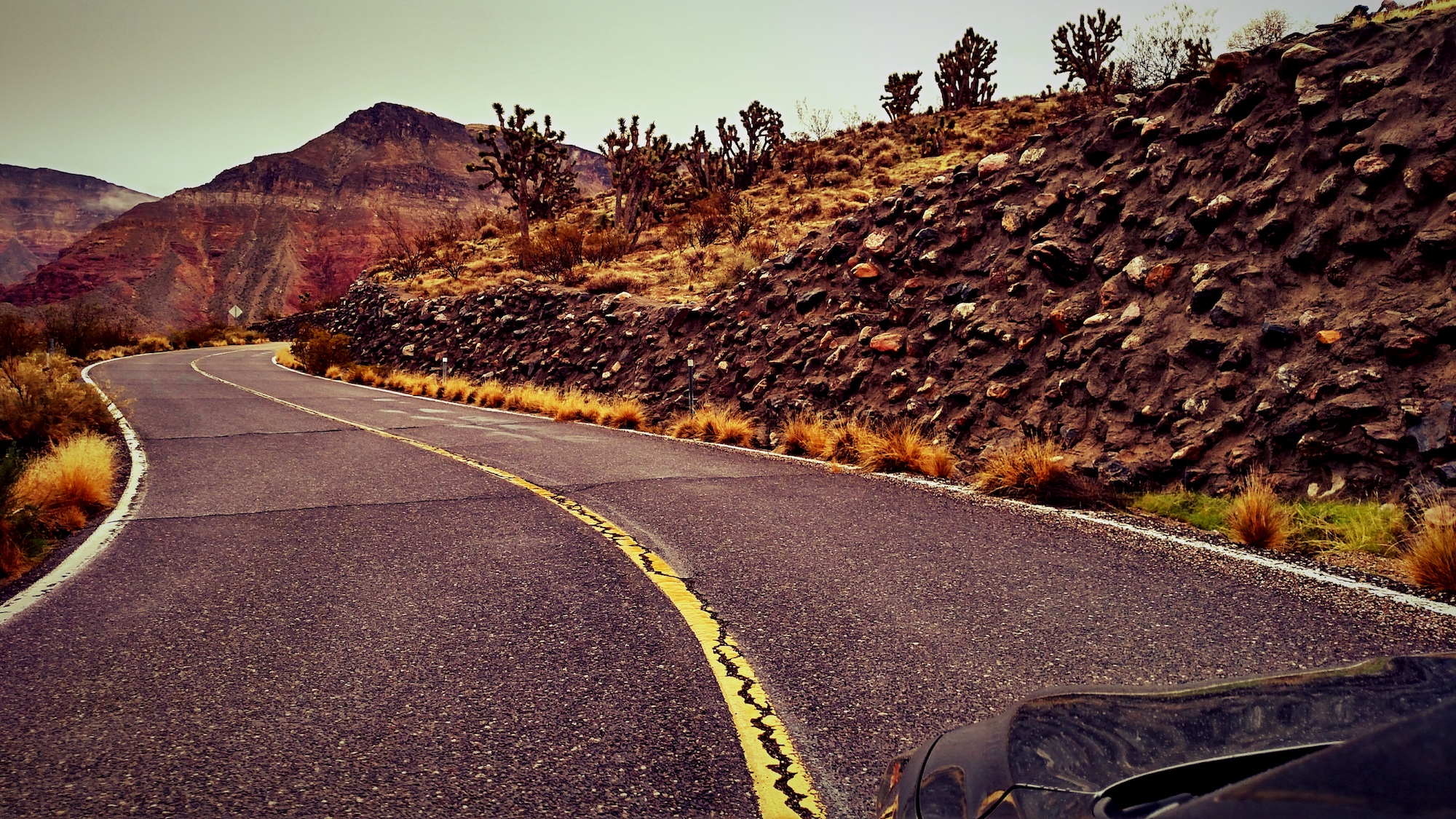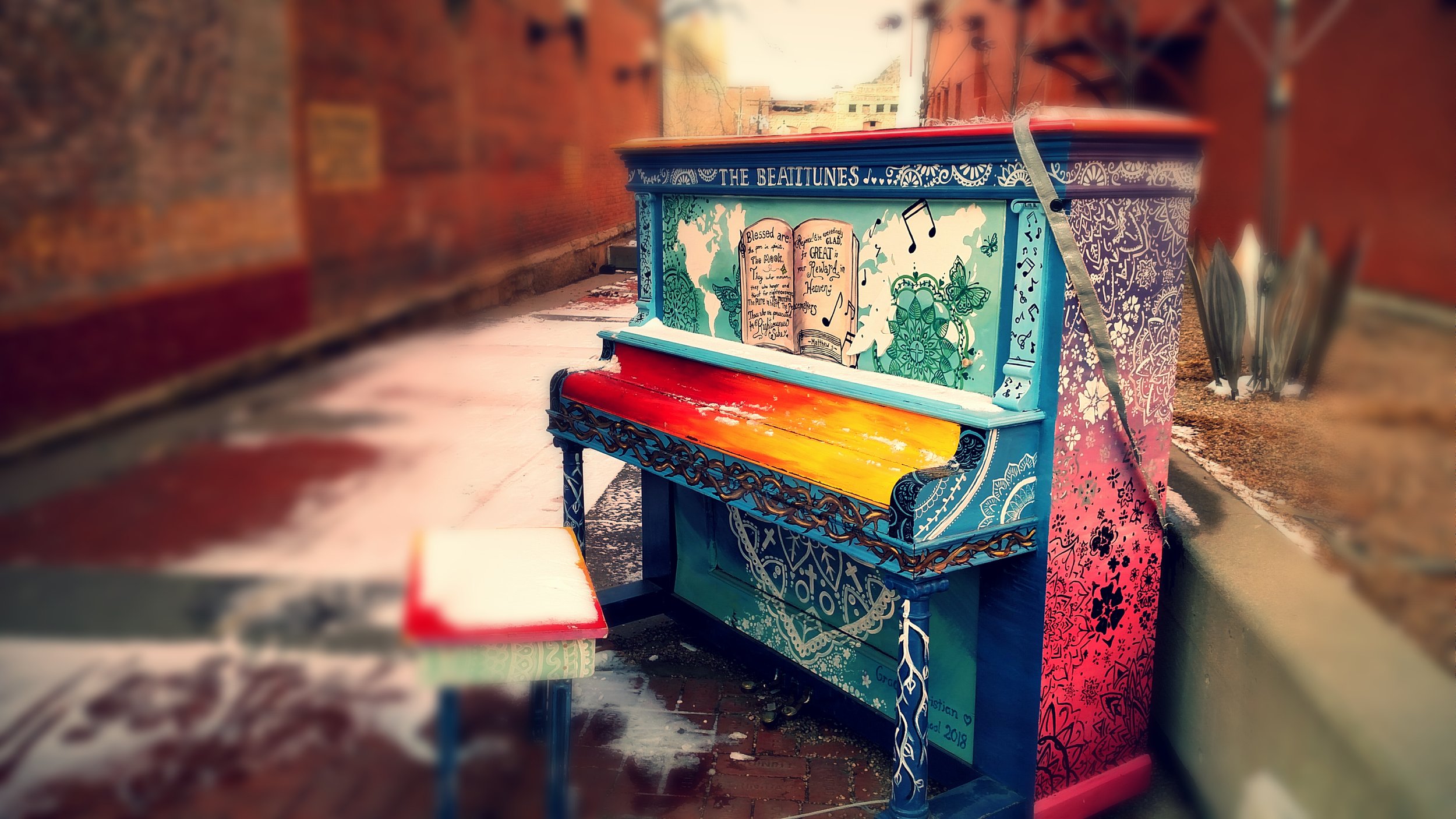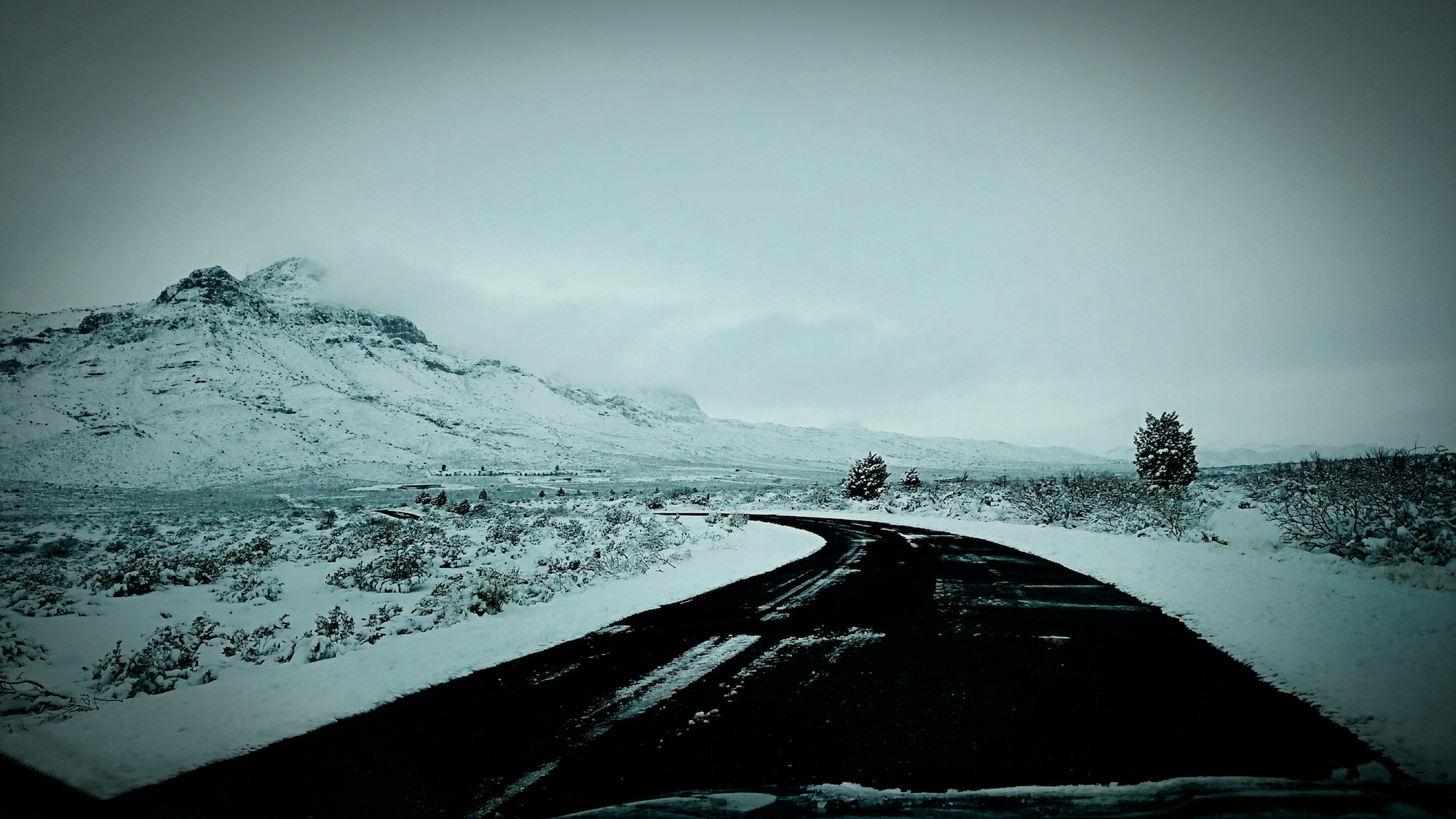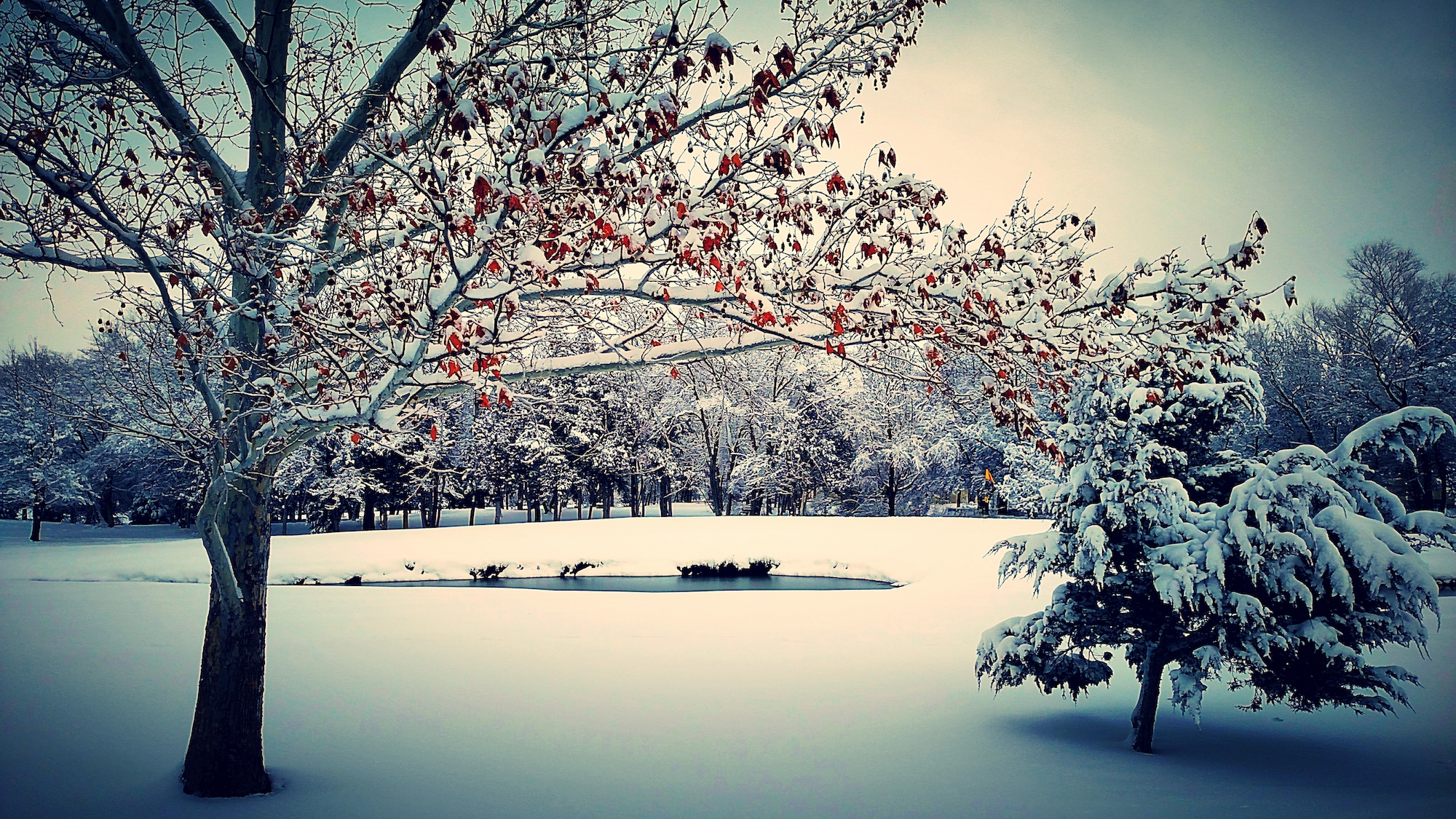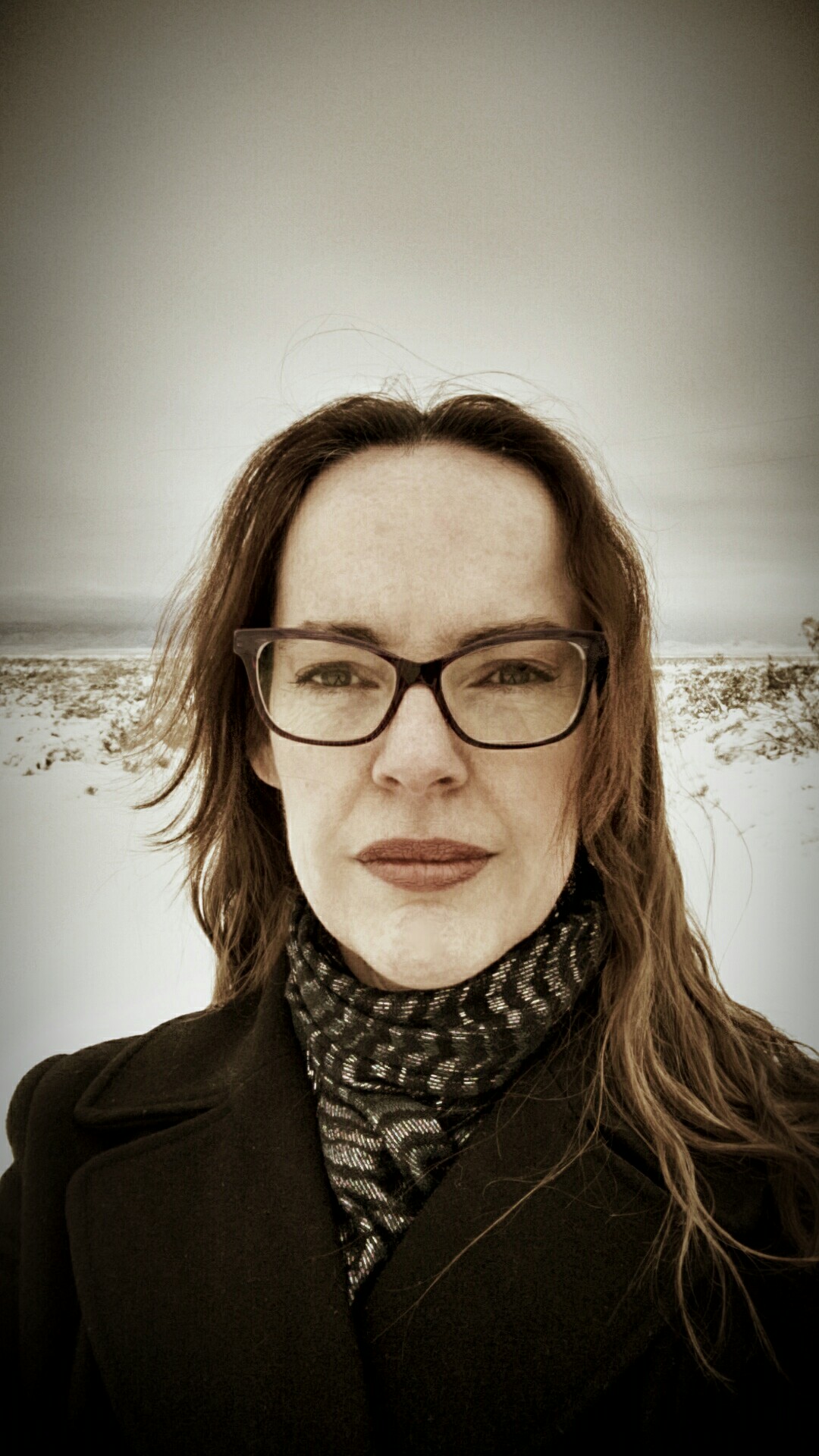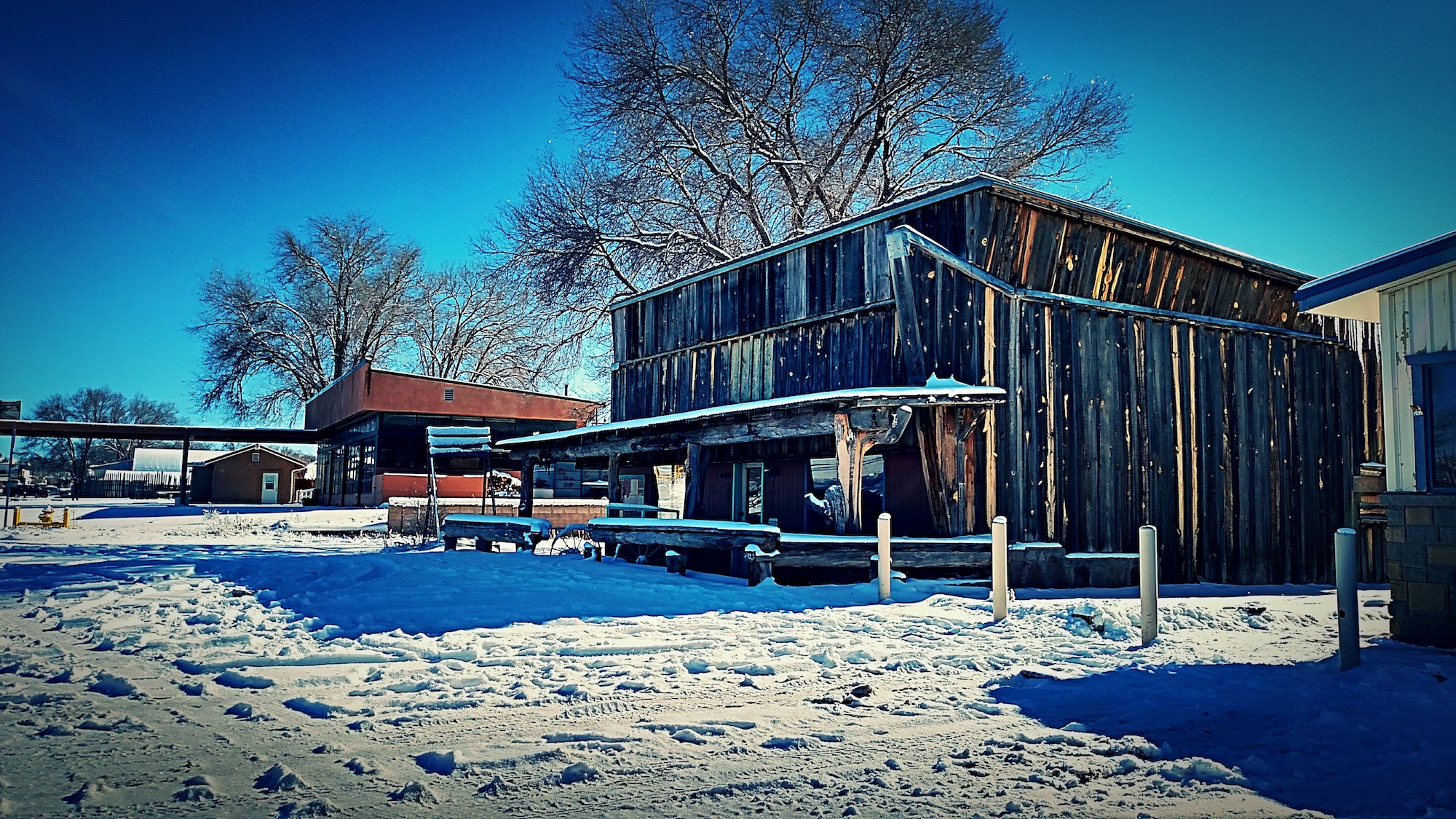Socorro, NM
First of all, yes that picture above is Socorro, New Mexico. Who knew it got so cold in New Mexico?? Elevation, as someone reminded me. Still, I’ve never seen a travel brochure that depicted a winter wonderland in the desert.
And secondly, all photos in this blog post were taken by me unless otherwise noted.
I took this solo road trip during Christmas week for two reasons. One: I’ve been struggling with depression for the last couple of months and feeling invisible, lost and alone, so I thought if I was going to feel this way, I might as well head out to the desert in a place where I really was invisible, lost and alone.
And two: because of the quietness of the holidays, I figured this would be a good time to unplug, decompress and try to recover my energy and that passion inside me that seemed to have faded away. I happened to meet up with a friend and colleague on the road and we discussed burnout, and that’s when it hit me that I was feeling so burned out I needed a whole new candle.
So not only did I drive out to the desert, but I took the long way in order to explore as much unchartered territory as I could — and ended up exploring the “Four Corners” states (Utah, Colorado, New Mexico, Arizona), “named after the quadripoint at the intersection of approximately 37° north latitude with 109° 03' west longitude, where the boundaries of the four states meet.”
This was the route I ended up taking (starting and ending in Los Angeles):
It’s early in the morning of December 25th. I’ve got my motor runnin’ and I’m headed out on the highway, lookin’ for adventure and whatever comes my way (to slightly paraphrase Steppenwolf.)
I head north on the 15, reaching Las Vegas faster than ever before on the relatively deserted freeway. In the stark midday light of winter, Vegas looks a lot like a prostitute on the morning after. I remember something my friend Marco recently said, and decide that his words will be my motto for this road trip: zen as fuck. In other words, no matter what, everything is good. No expectations, no disappointments, no impatience.
I play “Last Christmas” by Wham! as an homage to my brother Jess who, shall we say, strongly prefers not to hear that song ever again for the rest of his entire life and whom his friends and I regularly mention to him on social media. Yes, it’s a cheesy song and yes I’m still trying to understand what the exclamation point in their name is all about, but this song always signals the start of the holiday season, so I figure it would also signal the start of my Christmas road trip.
After three rounds of “Last Christmas,” I switch to an audio book biography of Michael Jordan. (What? I didn’t know you were interested in basketball or sports.) I’m not. But recently I was reading a book about mindsets called (surprise!) Mindset, and what it takes to be successful (however one defines that), and the author, Carol Dweck, mentioned a bunch of people who got to where they are not by luck or connections, but from a growth mindset that pushes them to practice and improve and challenge themselves and see failure as an important learning opportunity. And one of those people was Jordan. The other side of the growth mindset, by the way, is the fixed mindset who, when faced with a challenge or failure, quits, cries or blames and then retreats back to their comfort zone.
There’s not much to see along the 15 and I’m tired of basketball lingo and endless names of players, coaches and managers that I can’t keep straight, so I practice some Spanish, thanks to a learning app, talk to myself or enjoy the silence.
Fun fact: Apparently only Californians use "the" in reference to freeways – as in "I took the 15." Why? According to KCET, Los Angeles had freeways long before any other city, but because they were local, they were given names that meant something rather than numbers. So it was The Pasadena Freeway, The Hollywood Freeway, etc. When they switched over to numbered routes to match the rest of the country's new national freeway system, The Pasadena Freeway became The 110, and The Hollywood Freeway became The 101.
Beaver, Utah
Elevation: 5,902’
Population: 2,988
Founded: 1856
On the 15 north in the very NW corner of Arizona
Today has been mostly just driving. No stopping to admire views because of the cloudy, rainy, foggy and/or snowy weather, and no stops for coffee or lunch because everything but gas stations are closed. For Christmas. Even though I made the choice to take this solo trip, I feel a pang of deep loneliness. Zen as fuck, zen as fuck, I mutter to myself. I wonder how you say that in Spanish?
I pass through the northwest corner of Arizona where all of a sudden you see red soil and mesas (isolated flat-topped hill with steep sides), but as soon as I cross into Utah, poof! they disappear — as though they understand state borders.
I stop for the night in Beaver, Utah and upon stepping out of the car two things hit me: the 32 F (0 C) weather and the smell of cow manure and hay. A far cry from the 70 F (21 C) I left back in L.A., but the scent of poop and dried grass instantly reminds me of my grandparents’ farm up in Canada. My grandpa passed away in 2013 and my grandma passed just last year, and I find myself standing in the bleak, gray twilight in the middle of nowhere with the icy wind slapping my face and crying. I still miss them so much.
In my Comfort Inn hotel room (it was a choice between that, Best Western Butch Cassidy Inn or DeLano Motel that screams murder in cabin one, but the Comfort Inn wins because it was on my side of the freeway), I eat a piece of pecan pie and disenjoy a cup of hotel room coffee. (What? I thought you didn’t drink coffee.) I don’t, but it’s hot. As I do some yoga to stretch out the kinks from sitting in a car for 7 hours, I half watch an ‘80s Christmas television marathon, which includes “My Two Dads,” “227” and “Gimme a Break!” It’s amazing how crap ‘80s TV was, but their heart was in the right place. (Under the stone-washed jean jackets and shapeless, double-knit sweaters.)
Fun facts: Beaver lays claim to being the first town in Utah to get electricity. In 2006, Beaver won a contest for “best tasting rural water in the United States.” And this is where Butch Cassidy, the infamous Wild West outlaw, was born. Also, his real name was Robert Leroy Parker. Robert Leroy Parker and the Sundance Kid just doesn’t have the same ring, does it?
Comfort Inns, I discover the next morning, serve a hot breakfast buffet (including a waffle-making station), so I sit in the deserted dining room by myself and enjoy some pretty good scrambled eggs while looking out the window at the now-daylit landscape of flat flaxen fields and mostly bare outlines of trees. The only people I’ve seen since arriving last night are three employees — all older ladies, and all very kind.
When I check out, the woman at the counter says, “You have the same name as a famous singer.” “Sí, lo sé,” I reply. “Selena Quintanilla. Ella me gusta.” She stops typing and looks up. “Oh, habla español!” “Sí, un poco,” I say. Whod’ve thought I’d be speaking Spanish in Beaver, Utah?
12:07 p.m. — Eagle Canyon I-70 Westbound Rest Area
Stopped for the view, stayed for the bathroom. It’s basically an outhouse at a vista point, and if you haven’t peed while an icy wind is caressing your ass, you haven’t experienced life. Road trip wisdom comes back to me as I remember: always pee when you can because you never know when another bathroom will be available.
I take a few pictures of the landscape until my fingers start to freeze, and hop back into the car.
On the I-70 freeway in Utah
Grand Junction, Colorado
Elevation: 4,583’
Population: 62,475
Founded: 1882
I stop for a coffee break at Kiln Coffee Bar in Grand Junction, about 20 minutes after crossing into Colorado. The only discernable difference between Utah and Colorado is the speed limit — 80 mph in UT, 75 mph in CO.
Pass a homeless guy on the street who says hello, so I say hi, and he says I wish! At the cafe, I enjoy a very good latte as I sit at a table by the window and sketch in my notebook. (What? Coffee again?) Yeah, I know. Who have I become??
On the I-70 freeway in Colorado
The landscape changes so frequently it’s mesmerizing. Sometimes it’s actually snowy on one side of the highway and dry on the other side. One section I drive through looks like the moon (if the moon had an atmosphere and snow), another looks like the Great Plains (flat and flaxen), another has the red-soil mesas, and another part has low hills that look like velvety smooth elephant skin with large, draped folds.
There are definitely times when just driving the endless freeway in the car with only my racing and slightly obsessive thoughts and my heavy, sad feelings makes me incredibly restless and anxious. On a positive note, though, I learn that I can cry pretty hard with my eyes open.
Silverthorne, Colorado
Elevation: 9,035’
Population: 4,505
Founded: 1967
I’m an hour outside of Denver, but I have to stop for the night because it’s too dark, too hilly and too snowy to continue through the mountain pass. I’m leaning forward and opening my eyes as wide as they will go to try to see anything in the almost pitch black night. An annoying warning keeps popping up on the dashboard: “Alarm! Cold outside temperature!” That’s not an alarm, I think; that’s just a factual statement. Quit trying to freak me out.
Image source: Silverthorne, CO
Tempted as I am to stop in a town called “No Name” (a town so nice, they…didn’t name it), I keep going. Silverthorne is about 30 miles east of Vail (a ski town at the foot of Vail Mountain in White River National Forest), and while it might not be as well-known as Vail, that hasn’t stopped the town from charging big ski resort prices in the hotels.
I check in to the Silver Inn, and then walk in a foot of snow two blocks away to grab some dinner at Murphy’s Pub. I always love walking in the snow — there’s a special kind of silence that only happens after a fresh snowfall. The orange street lamps and Christmas-decorated trees that line the median cast a beautiful glow on everything.
At the pub, it’s my waiter’s third day on the job and he doesn’t seem to know much about anything — food, wine, hours of operation — but he’s very sweet and tries really hard, so I tip him well. There’s no reason for both of us to be depressed.
Denver, Colorado
Elevation: 5,130-5,690’
Population: 704K
Founded: 1858
This morning I check out of the hotel at 6:00 a.m. — still dark and roads are empty — and then sit in my car for ten minutes with the heater and window defroster blasting as I wait for the vehicle to thaw. It’s 8 F (-13 C). Memories of Vancouver (where I’m from) winters come back: wiping the snow/scraping the ice off the windows, using a lighter to heat my key in order to insert it into the frozen door lock, rocking the car back and forth to escape the icy snowdrift that surrounded the car overnight. Neighboring car drivers here in this parking lot know the drill: they lifted the wiper blades up before retiring for the night to prevent them from sticking to the glass. Note to self.
An hour and a quarter later, I’m sitting in the biggest Starbucks I’ve ever seen in Denver drinking a large cup of coffee (What are you, an addict now?) at 8:30 a.m. waiting for my friend and colleague Karen. When I look up and see her walking towards me with a big smile, I leap up and hug her. It’s so good to see a familiar face.
In this impromptu meeting, we wind up chatting for three hours and it feels like only thirty minutes have gone by. I met her at the RSA Conference for cybersecurity in San Francisco last spring, interviewed her soon after because she has an incredible story, joined her on an ITSPmagazine panel at Black Hat (another annual cyber conference) in Las Vegas last summer, and am going to be on a panel with her at her “Solving the Cybersecurity Talent Shortage” seminar at the upcoming RSA Conference. The session that she and I are presenting is called “Cybersecurity’s Dirty Little Secret and Talent Grenade: Burnout.” Although our meeting today is purely for pleasure, we do end up talking about our session and about burnout, and because of what I am feeling/going through, tears keep springing to my eyes.
Karen is one of those people who just radiates light and love, and I find her very inspiring and fun and wise. I really enjoy spending time with her and connecting and sharing personal stories with each other. I am reminded of how important human connection is, something that my depression causes me to forget.
My conversation with her opened my eyes to the idea of burnout (sometimes the most obvious things are hard to see) and really underscored my need to realign with my purpose and passion, and get off this treadmill that I’m on. As a freelance writer, you always have the sensation of juggling several balls, and in doing so I sporadically forget to add my own, personal, creative ball, the one that makes all the other balls worth it. Also as a freelancer, you forget to take time off because there’s no manager sending you emails reminding you to take your allotted vacation time or lose it and next thing you know you’re crying over a shoelace that won’t untie.
While waiting for Karen earlier, I sketched in my notebook, but I haven’t drawn for quite some time and am out of practice, and that makes me want to throw the pencil across the room and give up. That’s the fixed mindset. Challenge? Difficulty? Discomfort? Quit! Cry! Run away from it! Blah.
I head south on the I-25, and the first couple hundred miles are fairly nondescript. It’s flat, it’s straight, and the countryside is not very picturesque. I decide to accept my restless mind. For about twenty minutes. And then I put on the Spanish lessons. Tengo que hacer un viaje de negocios. No puedo llegar tarde al aeropuerto. Debo irme de inmediato.
Trinidad, Colorado
Elevation: 6,010’
Population: 9,096
Founded: 1879
Coal miners’ memorial in Trinidad, CO
About 20 miles before the New Mexico border, I stop for lunch at a town called Trinidad, which is on the historic Santa Fe Trail. Back in the 1800s, the Santa Fe Trail was a main thoroughfare that ran from Independence, Missouri to Santa Fe, New Mexico until they built a railroad in 1880.
When they found coal here in the 1860s, people flocked to this spot and within just a few years there were 1,200 residents. In 1882, Bat Masterson, an iconic Wild West figure known for being a gunfighter and the sheriff of Dodge City, Kansas, was the town marshal of Trinidad for about a year.
The above-mentioned railroad made it super easy for coal to be shipped across the country, but in 1902, the coal mine had a huge gas explosion and 13 miners were killed. Hence the coal miners’ memorial photo to the left.
Fun fact: a hundred years ago, Trinidad was the home of the first female sports writer of a newspaper: Ina Eloise Young. She was the only woman to cover the World Series (in 1908).
Colorful piano in Trinidad, CO
I’d forgotten that when you visit a small town, you stand out and everyone eyeballs you. So I am experiencing this odd mix of being invisible and visible, because people notice me, the stranger, but don’t talk to me. Speaking of eyeballs, though, mine are positively on fire after only three hours of sleep and two hundred miles of driving. So after a large cup of coffee, I take a walk around the town in the icy air in an effort to revive myself and come across the aforementioned coal miners’ memorial, a colorful piano sitting in an alley, and several other…shall we say “art installations”? Who knew Trinidad had so much to offer?
Santa Fe, New Mexico
Elevation: 7,199’
Population: 83K
Founded: 1610
I finally reach Santa Fe this evening and check in to the Comfort Inn — a hotel that is always the first I see when coming in to town, so they win. The full name of this city is La Villa Real de la Santa Fe de San Francisco de Asís, because it was named for the saint we all know as Francis of Assisi (who was actually born Giovanni di Pietro di Bernardone). Dang, that’s a lot of names. I’m exhausted (from driving, not from all these names) and can barely keep my eyes open, so I’m in bed by 7:30 or 8.
The problem with going out of your comfort zone is that, well, you go out of your comfort zone. I’m loving this feeling during the day, but at night it’s uncomfortable. Different bed, different noises, different heating system. I’m tense and jumpy. How can I be zen as fuck when I keep hearing noises in the hallway and other rooms that jolt me awake? Also, I’ve gotten out of bed like five or six times to try to figure out this godforsaken heater that’s straight outta 1942. And by the way, have you ever checked in to a hotel and then been directed to your room downstairs? It’s like living in a crap basement suite with party animal neighbors. Comfort Inn is now on my shit list.
The good news is, I get a hearty discount on my room upon checking out this morning after describing what I had to put up with. I cross the Comfort Inn off my shit list and go to breakfast. The dining room is packed, which surprises me. Who goes to a snowy desert for the holidays? Everyone, apparently. So much for my quiet, contemplative trip. I share a table with a couple who comes here every year for the skiing, then go out for my new morning ritual of warming up the car and scraping six inches of snow and ice off all the windows. My fingers freeze (I forgot to bring gloves), but that’s ok. It’s refreshing to feel something other than melancholy.
Downtown Santa Fe
I slide sideways out of the hotel’s icy driveway and head to downtown Santa Fe early, 8 a.m. or so. It’s beautiful and quiet and covered in fresh, untouched snow. The architecture of the town is all desert-colored adobe, with rounded arches and doorways. I park on the street and walk to the Plaza in the center of town, then to the Palace of the Governors with all the local vendors lining the covered walkway. There are many of these covered walkways, as evidenced in this picture to the left, and they feel very “old west.” I check out the History Museum gift shop (no time for the museum itself), the Francisco de Assisi church (below), some art galleries, and other buildings in the area.
It is f-f-freezing (21 F / -6 C), so I’m not able to stay outdoors for too long. Was going to stop for a coffee, but all the cafes in the area are now packed with tourists.
As I sit in my car warming up, I realize the fatal mistake in my plan: I’m covering too much distance in too few days, so I don’t have time to stop in each place for more than a few hours. I’m so bummed.
The Cathedral Basilica of St. Francis of Assisi
I wanted to go to Taos, I wanted to explore some of the historic Santa Fe Trail, I wanted to see the Ancestral Puebloans ruins, an ancient Native American culture that lived in the Four Corners region thousands of years ago (circa the 12th century BC).
Note: I’d always known them by the name Anasazi, but I just learned that the Navajo used to call them this, which means "ancient enemies," a term that, as you can imagine, modern-day Puebloans do not like. I snagged this picture (below) off the Internet just to show you what I am missing. These ancient peoples built vast cities into the sides of cliffs and if you’re thinking that this is a miniature, you’re wrong. Those are actual people in the photo.
Image source: Cliff Place, Mesa Verde National Park
A fellow I spoke to in Santa Fe encouraged me to go up Canyon Road on my way out of town for the view, so I did. Wow.
Canyon Road (or thereabouts) in Santa Fe, New Mexico
Socorro, New Mexico
Elevation: 4,603’
Population: 8,440
Founded: 1598
I pass right through Albuquerque because I’m not interested in huge cities, and just as I leave town I cross the majestic Rio Grande. It’s small and shallow at this point, but it’s still the Rio Grande!
I check into — you guessed it — the Comfort Inn in Socorro, which is smaller than I had imagined (the town, not the hotel). It’s also the complete opposite of Santa Fe: no adobes, no tourist attractions, no local vendors selling turquoise jewelry. It’s basically a freeway town. The main drag, California Street, boasts such establishments as “China Best Buffet,” “Blake’s Lotaburger” and a place whose sign out front simply says “Donuts. Coins.”
Socorro is tucked into a strip of land between the freeway and a low mountain range, and the snowy peak captivates me, so I drive out there (the following three photos, as well as the cover photo of this blog post, are all from this excursion).
Socorro, NM
Socorro, NM
Socorro, NM
This past summer I finished the first draft of a novel that takes place, in part, in Socorro, and while the Internet and my imagination did a great job, I knew I needed to come out here and experience it in person. So I drive around looking at all the spots my character goes to, and that is quite exciting. It feels like I’ve stepped into my novel.
Also, I’ve been reading a lot of books about the history (mostly mid- and late-1800s) of this area, and I was keen to see it in real life. I drive down the I-25 to Fort Craig, which used to be an army fort in the 1800s.
Near Fort Craig, south of Socorro, NM
I get off the main freeway and head east for about 5 miles or so along a dirt road covered in about six inches of snow twenty minutes before sundown. It’s completely deserted and quiet out here. The sky is heavy with gray, low clouds, and all of this just matches my frame of mind. I read an article last week and copied a short paragraph onto my phone, and I pull it out now and read it:
“It’s okay to feel lonely and lost. It’s okay to feel tired of trying. It’s okay to want more and wonder how to get it. You’re just human, and this is how we feel a lot. It’s not irregular or aberrant to feel despair. This is part of survival. Your shame is forming your despair into a merciless story about your worth. Don’t let it do that. Build something else from your shame instead.”
There is comfort in knowing that someone else feels the way I do. I look around and am suddenly nervous that I might get stuck (the road was very slippery) out in the middle of nowhere at night, so I turn around and go back to the freeway. I came within about 2 miles of the historic Fort Craig but didn’t actually see it, and that makes me disappointed in myself. And the weather, but mostly myself.
Back in Socorro, I have dinner at Frank & Lupe’s El Sombrero restaurant (pretty tasty shrimp fajitas). It’s so cold outside that they can’t keep the inside warm enough, so I don’t take off my coat. Afterwards, I don’t feel like going back to my hotel room, so I stop for a drink at Capitol Bar — very small town feel, very rustic, with wood floors and a few animal heads mounted on the wall. I look up and see a chandelier with plastic birds, dinosaurs and winged mermaids hanging from it like a mobile.
Everyone looks at me as I enter, naturally, but no one talks to me. I am impressed with myself that even in my sad state, I try to strike up conversation with a fellow barmate and the bartender. I am that hungry for connection with other humans. I sip my Glenlivet neat and watch an old guy with white hair playing a guitar and singing in the corner, nestled in between an ATM and a Christmas tree. Everyone ignores him until he stops playing, then they all turn around and clap. He doesn’t seem to notice or care; he’s just happy playing his songs.
On the wall in front of me is a framed front page of the Daily News from 1933 with the headline: “Sober City Hails Liquor’s Return…Prohibition Dead!” The first line reads: “Nearly 14 years of prohibition ended yesterday when Utah ratified the repeal at 5:32 1/2 p.m.” That’s one precise timekeeper.
Fun fact: In 1598, a group of Spanish settlers trekked through the Jornada del Muerto (which I thought meant “journey of the dead,” but Google Translate tells me it means “day of the dead”) desert into the area that is now Socorro. Piro Indians kindly provided them with food and water, so the Spaniards called this settlement Socorro, which means "help."
Quemado, New Mexico
Elevation: 7,378’
Population: 228
Founded: 1921 (the county)
Fun fact: 11.4 Fahrenheit equals -11.4 Celsius.
I'm driving west on the I-60, a narrow one-lane-in-each-way highway, and there is nothing but beautiful scenery all around me. The New Mexico desert has flaxen (okay, I’ve got to stop using this word) grass covering most of it and is peeping through the snow, which gives a beautiful pale golden hue to the vast snow-covered desert. It's all I can do to keep my eyes on the road. If only there was some place safe to pull over, get out and admire the scenery without the filter of a dirty car window.
A flock of birds is sitting in the middle of the highway and as I approach them, they all fly up and scatter into the sky. I've never seen birds hang out in the middle of the highway before.
I pass through “historic” (as the sign says) Magdalena. The only historic aspect to this town is the fact that they are still advertising color TVs in the motels. I would have stopped for breakfast, but I don’t see any cafes or restaurants. I guess that's another historic aspect of this place: you have to go out and hunt for your own food just like the pioneers.
It's become very foggy all of a sudden, quite a contrast from the bright sunlight earlier which reflected off the white snow. I have immediate visibility but maybe half a mile in all directions is a complete gray-washed fog. I'm completely alone on this country road. With the grass and desert and brush all coated with snow, I feel like I'm in a black-and-white photo. At the end of the Earth.
Quemado, New Mexico
I stop at a “cafe and motel” in Quemado for breakfast/lunch, just outside of Pie Town. The waitress, Star, is friendly and tells me the story of how she ended up here from California. As I sip my coffee, a family walks in and everyone — mom, dad, two kids — are dressed head to toe in camouflage. Apparently, this town gets most of its business during hunting season. I sketch my coffee cup and start to see a bit of improvement in my artistry. I don’t throw my pencil across the room.
Holbrook, Arizona
Elevation: 5,082’
Population: 5,049
Founded: 1881
I cross the state line into Arizona, and the first thing I see are those red-soil mesas. It's like red soil is not allowed to leave this state. An hour, hour and a half later, I stop in Holbrook for coffee and gas. As I wait for my coffee in the very quiet Camaleon Cafe, I notice that the employee, a family of four, and a middle-aged guy are all watching a movie on the TV hanging on the wall. I recognize Kurt Russell, but he’s wearing a superhero costume and I don’t recall him ever playing that kind of character. “What movie is that?” I ask, and immediately everyone grabs their phones and looks it up. It is Sky High, “a 2005 American superhero comedy film about an airborne school for teenage superheroes.” We all engage in lively conversation about this movie and how none of us remember it, and then my coffee is set before me and as I walk out of the cafe, it returns to its silence.
Fun facts: In the Old West days, Holbrook was known as "the town too tough for women and churches." Also, this area was first inhabited by the ancient Puebloans (in 12th century BC), followed by the Navajo and the Apache. In 1540, explorers came across a “wonderland of colors” about 25 miles east of this town and named it "El Desierto Pintada" (The Painted Desert).
So here I am, driving north on the 77 as per Google Maps trying to find the Painted Desert, which you would think would be extremely easy to locate, but after 40 minutes of nothing, I turn around. There’s no cell service here, so I can’t re-check the map, and I’m dangerously low on gas with nary a gas station in sight. I’m driving through the Hopi reservation, which feels kind of sacred and very historic. A lot more historic than Magdalena, that’s for sure.
Hopi Reservation, on the I-77 north in Arizona
I can’t believe that I can’t find 7,500 square miles worth of desert and giant, multi-colored rock. It reminds me of when I went to London and walked around trying unsuccessfully to find the Winter Wonderland, “London’s Spectacular Christmas Destination,” complete with ice rink, Ferris wheel, magical ice kingdom, and circus shows. Turns out I had been walking parallel to and about half a mile from the wonderland. What is wrong with my internal compass?
Fuck The Painted Desert, I think, and get back in my car.
Williams, Arizona
Elevation: 6,765’
Population: 3,158
Founded: 1881
Image source: Holiday Inn, Williams, AZ
After driving west on the I-40 for several hours, I reach Williams, Arizona (the “gateway” to the Grand Canyon) around 8 p.m. My plan is to spend the night here and then drive north to the Grand Canyon the next morning before heading back to L.A. It’s a cute town at night with Christmas lights all along the main street, but I soon discover that EVERY hotel is completely booked. There is not a room to be had, not even in the Red Garter Inn, a restored 1897 bordello. So much for “nobody goes to the Grand Canyon in the winter.”
Fun fact: One of my favorite movies, Midnight Run, starring Robert De Niro and Charles Grodin, was shot in this town. Or rather, one scene from the movie: the "phony 20 dollar bill” scene in Red's Saloon.
I’m super tired, struggling with my heavy feelings, and disappointed in this trip — well, with myself for not planning it better. I finally pull over and go to Goldie’s Route 66 Diner where I have a burger and figure out a new plan. There’s nowhere to stay here, and the next closest towns are at least an hour east or west. Considering how packed Williams is, I can count on the Grand Canyon being just as busy, if not busier. The quieter side of GC, the North Rim, looks more like my cup of tea, but that’s a five-hour drive from where I am. Isn’t there a spot on the canyon without gates and people and crowds and tourism? Can’t I just drive up to the rim, get out of my car, and gaze into the wondrous abyss? Apparently not.
And so I get back in the car, hop on the 40 west, and drive through the night until I reach Los Angeles at 3 in the morning. The giant cup of coffee I drink does nothing to keep me awake, but the Spanish lessons do. For six hours I speed towards home at 90 mph in the dark relentlessly repeating: Acabo de terminar mi proyecto de trabajo. No fue tan difícil como pensé. ¿Te gustaría ir al cine?
I make it home safe and sound — and rather fluent in Spanish.
I-40 west, Arizona
Los Angeles, California
Elevation: 305’
Population: 3.8M
Founded: 1835
This trip was not what I had in mind and I feel the weight of disappointment in my chest. My solo, contemplative, restorative, realigning adventure was just me racing through 2,500 miles in five days.
The day after I arrive home, I hear someone on some TV show say “You don’t always get what you want, but you always get what you need.” I start to roll my eyes, but then I think about it. Is that true? No, I didn’t have this massively adventurous, spiritually enlightening, one-with-nature trip, but I did get to unplug and just be, with no distractions. None whatsoever. Not a one.
California beach
Two days after I’ve returned, I start to feel the experience of my road trip seep into my bones. Long-forgotten flashes of energy and motivation spark inside me in the little crevices between busy and despondent, and then things, little things, start moving. I get asked on a date, my fun, out-of-town mom comes to visit me, I dive back into my daily yoga practice, I write this blog post and remember what creativity feels like.
I also read two books: The Happiness Advantage and Michelle Obama’s autobiography Becoming. Both of them mention the growth mindset, both discuss overcoming one’s hardships and “failures” rather than letting them define and hold you back, and Michelle recounts her innate urge to conquer her challenges despite her ongoing feeling of I’m not enough.
But it’s a line from The Happiness Advantage that sticks in my mind days later: “When our brains get stuck in a pattern that focuses on stress, negativity and failure, we set ourselves up to fail…rather than spot patterns of possibility so we can see opportunity wherever we look.”
After three(ish) months of crying myself to sleep and forgetting what hope tastes like, I feel like my head is finally above water. So I guess this trip, exactly as it was, is just what I needed.


